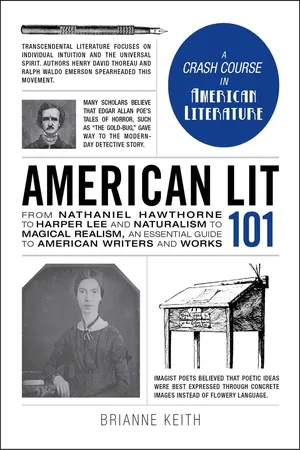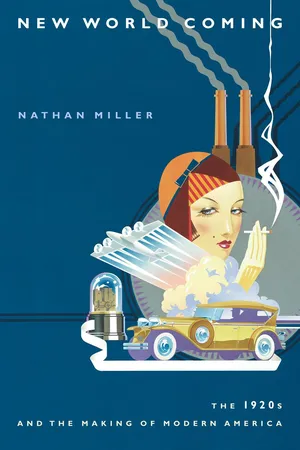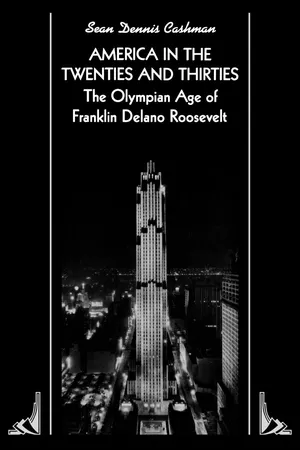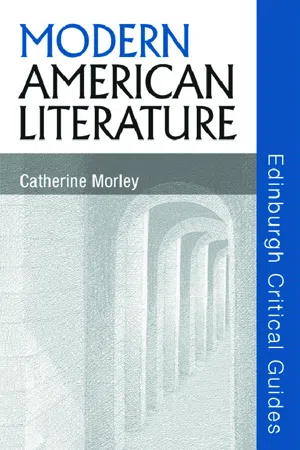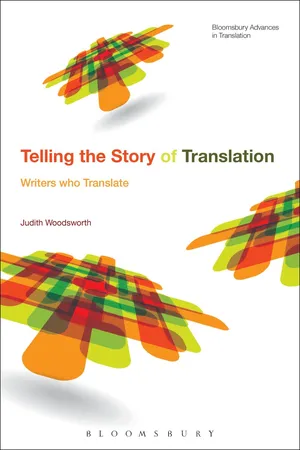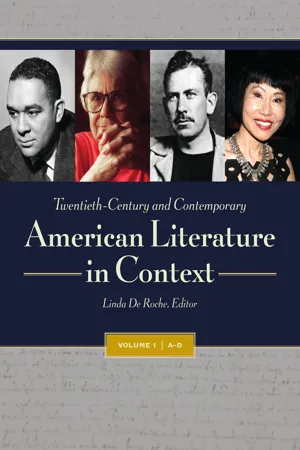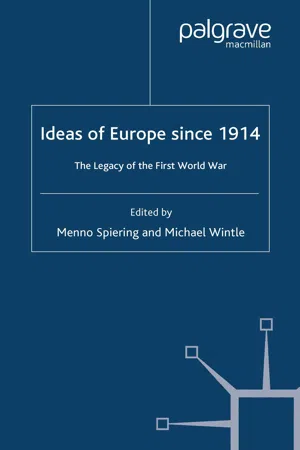Literature
Lost Generation
The "Lost Generation" refers to a group of American writers who came of age during World War I and felt disillusioned by the societal changes that followed. This term was popularized by Ernest Hemingway and encapsulates the sense of aimlessness and disillusionment experienced by the generation. The literature produced by these writers often reflects themes of alienation, disillusionment, and a search for meaning.
Written by Perlego with AI-assistance
Related key terms
1 of 5
8 Key excerpts on "Lost Generation"
- eBook - ePub
American Lit 101
From Nathaniel Hawthorne to Harper Lee and Naturalism to Magical Realism, an essential guide to American writers and works
- Brianne Keith(Author)
- 2017(Publication Date)
- Adams Media(Publisher)
Interestingly, at the heart of modernism lay a very important irony: While there was excitement to move forward and leave old traditions and beliefs behind, there was also a sense of regret that traditions were lost. As a result, you can see writers creating works that both catapulted literature forward and works that more cautiously tried to re-envision traditions to preserve them in some way. Writers either reveled in the chaos or were anxious to put the pieces back together—while some managed to find humor in it all.Passage contains an image
The Lost Generation
The Roaring Twenties
“One generation passeth away, and another generation cometh; but the earth abideth forever . . . The sun also ariseth, and the sun goeth down, and hasteth to the place where he arose.” —EcclesiastesThe Lost Generation seemed an appropriate term for the twenty- and thirty-somethings who came of age after the war. Soldiers, witness to so much carnage, now returned home and felt like strangers to their own homes. Young people who didn’t go to war were just as disaffected—many of them went to Europe to escape the sense of fragmentation at home (also, the drinking age was lower).The American expatriate Gertrude Stein (1874–1946) was in many ways the literary “mother hen” of the Lost Generation. She counseled writers, gave them support, and put into motion some of the defining artistic philosophies of the era.A writer and intellectual herself, Stein left to live in Paris when she was young and stayed there for most of her life (though she never considered herself an expatriate—always an American first). She shared an apartment with her partner, Alice B. Toklas, that became a massive hub for writers, intellectuals, artists, and American expatriates. Pablo Picasso, who painted her portrait, and Ernest Hemingway, who immortalized her term “Lost Generation” in his novel The Sun Also Rises , were some of the stars who crossed Stein’s threshold.Stein even christened the Lost Generation: Supposedly, one day in Paris, Stein overheard her car mechanic tell his young workers, who weren’t going fast enough, “you’re all a Lost Generation.” For Stein, the term stuck.Gertrude Stein’s Style
Gertrude Stein had a radical writing style that in many ways captured the experimental spirit of the modernist era. Her writing aimed to revolutionize what the very function of a word - eBook - ePub
New World Coming
The 1920s and the Making of Modern America
- Nathan Miller(Author)
- 2010(Publication Date)
- Scribner(Publisher)
At her salons, she monopolized the writers while their wives and girlfriends talked to her tiny, ever watchful companion, Alice B. Toklas. “You are all a Lost Generation,” Stein told Hemingway one evening. “All of you young people who served in the war. You have no respect for anything. You drink yourselves to death.” This catchy bit of bombast was not original. Stein had picked it up from a French garage owner’s diatribe against a young mechanic who failed to take proper care of her beloved Model T. * In his fictionalized memoir of the Paris years, A Moveable Feast, Hemingway wrote that he angrily rejected the idea that a generation could judge the one that followed. As he walked back to his flat, he was still seething. “The hell with her lost-generation talk and all the dirty, easy labels,” he muttered. † Nevertheless, “a Lost Generation” became the unofficial badge of the literary generation of the Twenties because it so aptly evoked the alienation, disillusionment, and cynicism so fashionable during those years. Moreover, the postwar intellectuals relished its romantic image of doomed youth. But like all such labels, it was only partially true. While some young people drifted aimlessly and without purpose from bar to bed and bed to bar, others worked hard at establishing themselves as writers, poets, and artists. Besides, a generation that produced The Sun Also Rises, A Farewell to Arms, The Great Gatsby, Tender Is the Night, The Sound and the Fury, The Maltese Falcon, and the trilogy U.S.A. can hardly be said to be “lost.” Rather, as the poet Archibald MacLeish noted, the Twenties was “the greatest period of painting and music, literary and artistic innovation since the Renais-sance.” John Dos Passos captured the excitement of the Paris that greeted these young Americans - eBook - ePub
America in the Twenties and Thirties
The Olympian Age of Franklin Delano Roosevelt
- Sean Dennis Cashman(Author)
- 1989(Publication Date)
- NYU Press(Publisher)
11 REQUIEM, BUT NO PEACE The Lost Generation and the Arts Y OU ARE all a Lost Generation,” is the first of the two epigraphs to Ernest Hemingway’s novel, Fiesta, or The Sun Also Rises (1926). The remark is accredited to Gertrude Stein and this pithy observation has remained as the unofficial title for the dominant literary generation of the 1920s, although Hemingway subsequently regretted using the phrase and Gertrude Stein denied ever having uttered it. The writers of the Lost Generation were, strictly speaking, expatriates such as Hemingway himself, F. Scott Fitzgerald, Sherwood Anderson, and John Dos Passos, who all spent at least months, if not years, in Paris, but membership can be extended to include those writers who stayed at home and resisted the opportunity for exile with a comfortable bohemian life-style that Paris offered Americans owing to the strength of the dollar. However, in many ways, even those who stayed at home, such as Sinclair Lewis, Ring Lardner, and Eugene O’Neill, were in exile, internal exile. Writers were alienated by the culture of commerce that permeated the superficial, tawdry affluence of America in the 1920s. The epithet “Lost Generation” has survived because it evokes the themes of alienation, disillusionment, and cynicism with tradition, religion, and even literature itself that dominated the literature of the 1920s. Yet in many ways these negative attitudes also helped consolidate the beginnings of modernism in America’s written culture. The second epigraph to The Sun Also Rises, taken from Ecclesiastes, provides the novel with its title and is a poignant expression of Ernest Hemingway’s outward pessimism and nihilism: “One generation passeth away, and another generation cometh; but the earth abideth for ever. . . - eBook - PDF
- Catherine Morley(Author)
- 2012(Publication Date)
- Edinburgh University Press(Publisher)
The novel is arguably the best portrait of a Lost Generation, a group so disillusioned by history and ener-vated by existence itself that they lack purpose, direction and the bonds of loyalty which might otherwise hold a group of expatriate friends together. For one of the group, Bill Gorton, this aimless-ness derives from their self-imposed exile: You’re an expatriate. You’ve lost touch with the soil. You get precious. Fake European standards have ruined you. You drink yourself to death. You become obsessed by sex. You spend all your time talking, not working. You are an expatriate, see? You hang around cafés. (p. 100) Although Hemingway wrote the first draft of the novel in just five weeks, he spent five months in extensive revision and editing. Sales were disappointing, despite wide and generally favourable reviews. Though John Dos Passos and Allen Tate disliked the book, Edmund Wilson declared it the best novel of the Lost Generation. 41 In the New York Herald Tribune , Conrad Aiken commended the dialogue while Bruce Barton remarked that Hemingway wrote as if ‘he had fashioned the art of writing himself ’. 42 H. L. Mencken, too, praised the tautness of the writing, and Cowley observes that the novel ‘soon became a handbook of conduct for the new generation . . . many of the younger writers had begun to walk, talk and shadowbox like Hemingway, when they weren’t flourishing capes in front of an imaginary bull’. 43 The 166 modern american literature Stein-inspired epigraph at the beginning of the novel consolidated the author’s reputation as the voice of his generation; ironically, though, Hemingway protested to his publisher, Maxwell Perkins, that he had included it simply to play against Stein’s ‘bombast’ and her ‘assumption of prophetic roles’: The point of the book to me was that the earth abideth forever – having a great deal of fondness and admiration for the earth and not a hell of a lot for my generation and caring little about Vanities. - eBook - PDF
Telling the Story of Translation
Writers who Translate
- Judith Woodsworth(Author)
- 2017(Publication Date)
- Bloomsbury Academic(Publisher)
While each instance of translation, or each engagement with the act of translating, is problematic in that a certain degree of ‘non-translation’ or resistance is involved, each one is also instructive. Exiles and expatriates The so-called ‘Lost Generation’ has captured the American imagination, having been abundantly portrayed and immortalized in both fiction and nonfiction, as well as in the cinema – in Woody Allen’s 2011 film Midnight in Paris , for example. 3 Stein was one of its most prominent representatives, but she actually preceded and outlasted that group, many of whom arrived in Paris as the First World War was ending, then returned home as the Great Depression began. Paul Auster, as chapter three will show, would also embrace this ‘enduring literary myth’ of American writers learning their métier in a Parisian garret; Gertrude Stein tops his list of examples. Stein did settle in Paris early, as a matter of fact, and even claimed to have ‘created’ the twentieth century, but she was actually part of a longer tradition, which merits closer scrutiny. The term ‘exile’ is generally associated with banishment, expulsion, and dislocation. The American artists and writers who found their way to Paris were not driven by famine, poverty, persecution, or war. While they could more Gertrude Stein and the Making of Translations 69 properly be considered ‘expatriates’, the truth is that they branded themselves as ‘exiles’. Ezra Pound, notably, claimed ‘world citizenship’ for himself (1909; quoted in Dennis 2000: 89) and founded a short-lived magazine called The Exile . In 1934, Malcolm Cowley, a magazine editor and minor figure in the Lost Generation, published a book called Exile’s Return , showing the movement of authors out of America after the First World War and then back again after the 1929 financial crisis. - eBook - ePub
After the Lost Generation
A Critical Study of the Writers of Two World Wars
- John Watson Aldridge(Author)
- 2019(Publication Date)
- Arcole Publishing(Publisher)
The story of what happened during those years abroad has been written and rewritten many times over. The process of exile was complete. The young men came to Paris. With their wives and children, cats and typewriters, they settled in flats and studios along the Left Bank and in the Latin Quarter. They took jobs as foreign correspondents for American newspapers, sent back social gossip and racing news; wrote book reviews, magazine articles, and stories; bet on horses, gambled, borrowed, and begged; did anything to keep alive and to prolong the show. If we can believe the stories, they were drunk much of the time, traveled considerably, and had a great many love affairs. They also managed to get an impressive amount of good writing done. The early work of Hemingway, Fitzgerald, Dos Passos, Cummings, and others bears witness to the fact. Betweentimes, when they were not drinking at the cafés, partying, or making love, they talked a lot and did a certain amount of thinking. At about this time, some of them discovered Gertrude Stein, and she, in turn, discovered among them talents worthy of her guidance. It was she, perhaps more than any other, who taught them how to make the most of their “lostness,” how to develop, as had Sherwood Anderson, an idiom that would be true of their time and truly their own.Then, as the new writing began to appear, new little magazines began springing up to accommodate it. Their titles, Broom, transition , This Quarter, Secession , were indicative of their editorial policies. Fresh currents of energy were breaking out everywhere, everywhere the accent was on the new and different, the departure from old forms and techniques, the rebellion. The years of European apprenticeship were paying off in a vigorous new literature, a literature written so compellingly, with such a tragic sense of loss, that it seemed to describe the predicament of all contemporary humanity. For writers like Hemingway, Dos Passos, and Cummings, the experience of their generation—the bitterness, the monumental disbelief which the war had taught—was the only tradition. They had been uprooted from the world of their childhood with its unwavering ideals and trusts and plunged into the world of Caporetto, the Western front, the “enormous rooms” of the war; and they had awakened from the war only to find themselves in another and even more fantastic world—that of Dada, surrealism, and Gertrude Stein. If they understood only the immediate present and past, if they worshiped only the gods of sex, liquor, violence, and art, it was because they had known nothing else. Life for them would forever after be perceived and lived within the frame of the war and the emotions of war.Thus, while Mencken and Lewis were still discovering the banalities of life back home, the young men who had acted on their indictments and fled to Europe were discovering a new language which would express themselves and their own unique experience. In Gertrude Stein the demands of a persistent originality had led to greater and greater indulgence in pure technique. Hers was an art deprived of its objective basis, lost somewhere in the convolutions of its careless meaning. The search for ever-widening suggestiveness carried the older Joyce into the limbo of dream, the ultimate subjective state beyond the necessity of words. But the young Hemingway’s search for the “real thing,” “the exact sequence of motion and fact which made the emotion,” ended in a prose that was as crystal-clear as brook water, that was written “without tricks and without cheating,” with nothing that would “go bad afterwards.” Hemingway in those years was the American compromise with Dada. He was everybody’s example of an American who combined the best that was in America with the zeal and discipline of the French. He was coarsely, robustly healthy in the tradition of Mark Twain and Sherwood Anderson, but he was never vulgar, almost never naïve; and in his passion for exactitude, le mot juste, - eBook - ePub
- Linda De Roche(Author)
- 2021(Publication Date)
- ABC-CLIO(Publisher)
Hemingway, Ernest (1899–1961)Ernest Hemingway is arguably the most famous American writer of the twentieth century. His books have never gone out of print, and his image is still used to sell furniture, sunglasses, and cocktails. Best known for his revolutionary innovations in literary style, he is also one of the writers associated with the Lost Generation of young men and women disillusioned by World War I (1914–1918), primarily expatriates, who settled in Europe, primarily Paris, in the 1920s. Indeed, it was to Hemingway that the writer Gertrude Stein issued her famous pronouncement, “You are all a Lost Generation,” which served as one of the epigraphs of his 1926 novel of that generation, The Sun Also Rises.Born on July 21, 1899, to Clarence “Ed” Hemingway, a physician, and Grace Hall Hemingway, a music teacher, Hemingway grew up in Oak Park, Illinois, a Chicago suburb, but his family summered at a cottage in northern Michigan, a locale that inspired some of his best short fiction. He first showed evidence of his interest in writing when he wrote for the Oak Park High School newspaper, Trapeze, and yearbook, Tabula. Instead of going to college, he went to work for the Kansas City Star as a cub reporter.Eager to participate in World War I, Hemingway volunteered for the Red Cross when he was eighteen years old. He served briefly as an ambulance driver but on July 8, 1918, was badly wounded in the leg while handing out cigarettes and chocolate to Italian soldiers. He recuperated at a hospital in Milan, Italy, where he fell in love with his twenty-six-year-old American nurse, Agnes von Kurowsky. Two months after he returned home, she jilted him by letter. Their relationship inspired his 1929 novel A Farewell to Arms. It was also dramatized in the 1996 film In Love and War.Hemingway married Hadley Richardson in 1921, and soon afterward they traveled to Paris, where he reported for the Toronto Star and became associated with the Lost Generation. The couple had one child, John, whom they nicknamed “Bumby.” During their marriage he published his first book, the 1925 short-story collection In Our Time. Hemingway wrote of his years in Paris in both his first novel, The Sun Also Rises, and a posthumously published memoir, A Moveable Feast (1964). Unhappy with his publisher, he wrote The Torrents of Spring (1926), a parody of Sherwood Anderson’s work, accurately believing that Liveright would refuse to publish it on the grounds that it disparaged their star writer. When Liveright did indeed reject the novella, Hemingway was then legally free to take both it and his eagerly awaited novel The Sun Also Rises - eBook - PDF
Ideas of Europe since 1914
The Legacy of the First World War
- M. Spiering, M. Wintle, M. Spiering, M. Wintle(Authors)
- 2002(Publication Date)
- Palgrave Macmillan(Publisher)
130 8 Europe and the Lost Generation: William Dieterle’s The Last Flight Neil Sinyard ‘You are all a Lost Generation.’ (Gertrude Stein) Cinematic images of Europe ‘I really credit Hollywood on World War One’, opined the writer Anita Loos to film historian Kevin Brownlow (1979, 80). She was offering her account of one of the filmic consequences of the outbreak of war in Europe, namely the opportunity it gave to the American film industry to consolidate and expand its position on the international stage while Europe was otherwise occupied. As film history, the account is probably oversimplified. There were many factors at this time that were contri- buting to the rise of American film: for example, the business acumen of its new production entrepreneurs, such as Adolph Zukor of Paramount Pictures and William Fox of the Fox Film Company; the enormous home market for its product; the growth of the star system that rapidly made performers such as Charlie Chaplin and Mary Pickford millionaires; and the growing quality of its product from film artists such as D.W. Griffith, Thomas Ince and Cecil B. De Mille. In other words, ‘Hollywood’ would have happened with or without the First World War. Nevertheless, it would be true to say that film production in America between 1914 and 1917 benefited enormously from the reduced European competition. In Europe, actors were called up, studios requisitioned and investment curtailed. For a time, production was at a standstill. When it resumed, the films produced tended to be war-oriented and propagandist in tone, which was not necessarily what audiences wanted to watch. As George Orwell observed, during wartime, Neil Sinyard 131 one might prefer reading literature that did not bring to mind the current barbarism, but rather humdrum civilization; or perhaps a love song by J. Alfred Prufrock over a war requiem from Wilfred Owen.
Index pages curate the most relevant extracts from our library of academic textbooks. They’ve been created using an in-house natural language model (NLM), each adding context and meaning to key research topics.
